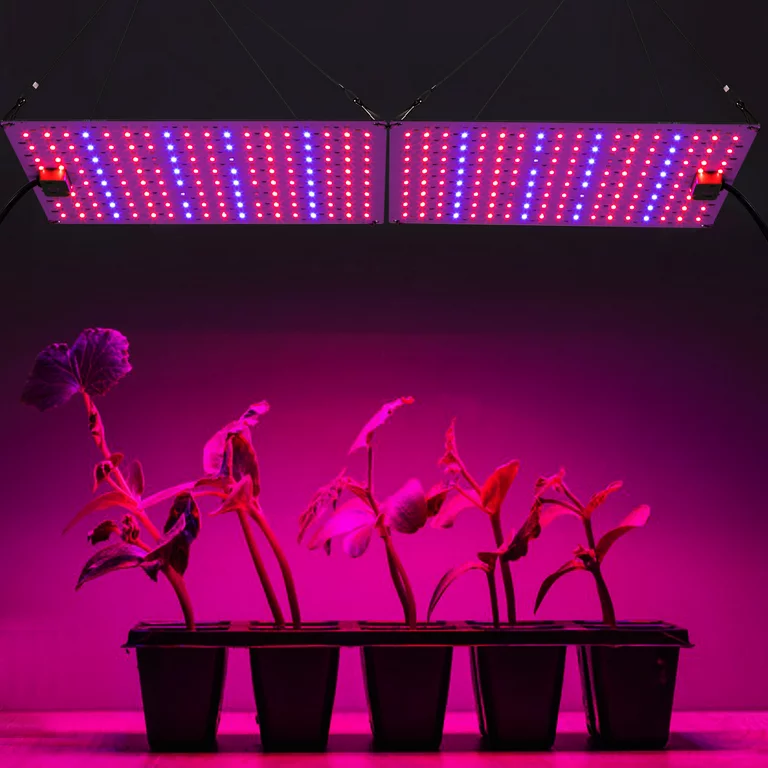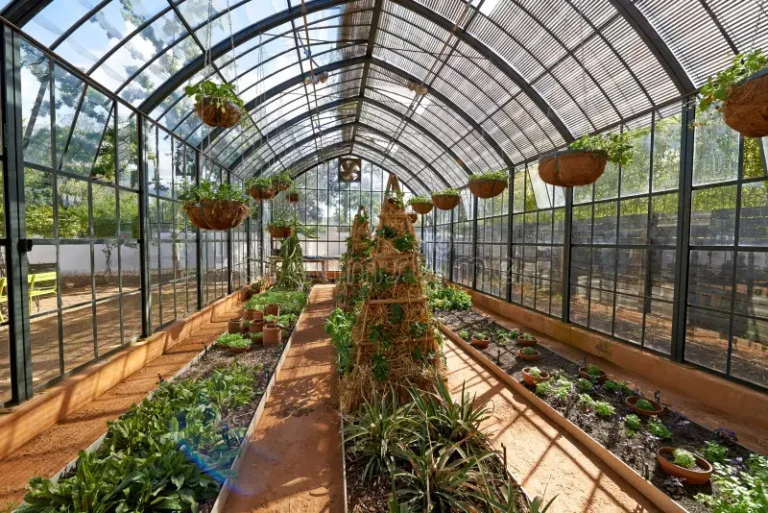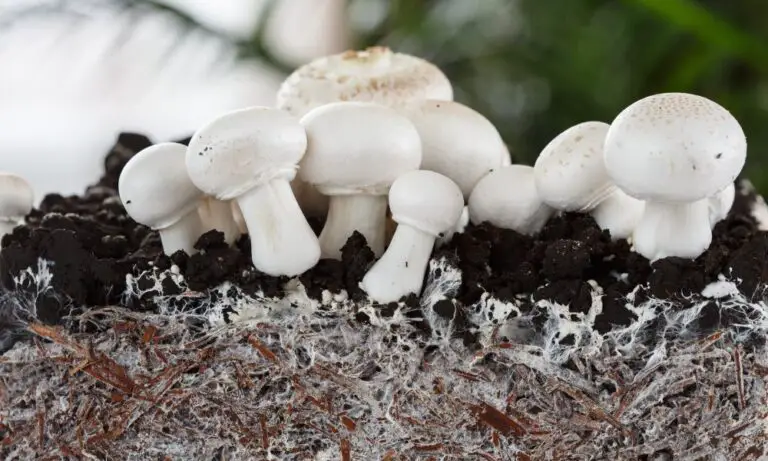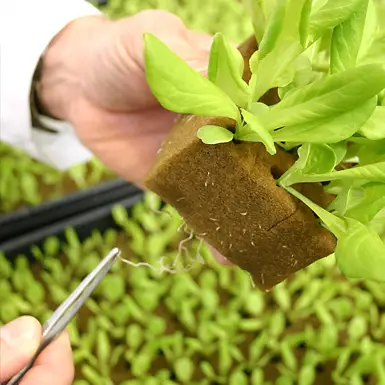Budget-Friendly Alternatives to Expensive Grow Lights for Indoor Plants
Table of Contents
Understanding the Importance of Light for Indoor Plants
Indoor plants have become increasingly popular among gardening enthusiasts due to their numerous benefits. However, one critical factor that often goes overlooked is the importance of light for these plants. Light is the primary source of energy for photosynthesis, the process through which plants convert light into food. Without proper light exposure, indoor plants may struggle to thrive and reach their full potential.
When it comes to indoor plants, light serves multiple essential purposes. Firstly, light is necessary for the process of photosynthesis, as mentioned earlier. This process not only enables plants to produce their own food but also plays a vital role in their growth and development. Moreover, light affects various aspects of plant biology, including their shape, color, and overall health. Adequate exposure to light can stimulate healthy leaf and stem growth, vibrant foliage, and robust flowering, making it crucial for the overall well-being of indoor plants.
By understanding the importance of light for indoor plants, gardening enthusiasts can provide optimal conditions for their green companions. Whether you are a beginner or an experienced gardener, it is essential to grasp the significance of light and its impact on plant growth. In the following sections, we will delve deeper into the various aspects of light for indoor plants and explore different strategies to maximize its benefits. So, let’s shed light on the topic and unveil the secrets to achieving thriving indoor greenery.
• Light is the primary source of energy for photosynthesis, the process through which plants convert light into food.
• Without proper light exposure, indoor plants may struggle to thrive and reach their full potential.
• Light serves multiple essential purposes for indoor plants.
• Adequate exposure to light can stimulate healthy leaf and stem growth, vibrant foliage, and robust flowering.
• Understanding the importance of light for indoor plants is crucial for providing optimal conditions for their growth.
• Whether you are a beginner or an experienced gardener, it is essential to grasp the significance of light and its impact on plant growth.
Natural Light as an Alternative for Indoor Plant Growth
Natural light is a vital factor in the growth and development of indoor plants. While artificial lights, such as LED bulbs and fluorescent lights, can provide some level of illumination, nothing can truly replicate the full spectrum of sunlight. Sunlight contains a diverse range of wavelengths, including ultraviolet (UV) radiation, visible light, and infrared (IR) radiation, all of which play essential roles in plant growth.
One of the primary benefits of natural light is its ability to trigger photosynthesis, the process by which plants convert light energy into chemical energy, fueling their growth. Sunlight provides the necessary wavelengths for photosynthesis, allowing plants to produce glucose and oxygen. Additionally, the intensity of natural light changes throughout the day, mimicking the diurnal cycle that many plants have adapted to. This daily fluctuation in light levels helps regulate important biological processes, such as flowering and leaf expansion. Overall, relying on natural light as much as possible can contribute to healthier and more robust indoor plants.
• Natural light provides a diverse range of wavelengths, including UV radiation, visible light, and IR radiation, which are all essential for plant growth.
• Sunlight triggers photosynthesis in plants, allowing them to convert light energy into chemical energy.
• The intensity of natural light changes throughout the day, mimicking the diurnal cycle that many plants have adapted to.
• Daily fluctuations in light levels help regulate important biological processes in plants such as flowering and leaf expansion.
• Relying on natural light can contribute to healthier and more robust indoor plants.
Maximizing Natural Light for Indoor Plants
Natural light is a crucial factor for the growth and development of indoor plants. Maximizing the amount of natural light that reaches your plants can significantly improve their overall health and vitality. When it comes to indoor gardening, nothing beats the power of sunlight.
One of the key considerations in maximizing natural light for indoor plants is positioning. Placing your plants near windows or areas with ample sunlight exposure can make a noticeable difference in their growth. Avoiding any obstructions that could block the sunlight, such as curtains or furniture, will ensure that your plants receive the full benefits of the available natural light. Additionally, rotating your plants periodically can help ensure that all sides receive equal exposure to sunlight, resulting in more balanced and even growth. By taking these simple steps, you can harness the power of natural light to optimize your indoor gardening experience.
• Position your indoor plants near windows or areas with ample sunlight exposure
• Avoid obstructions like curtains or furniture that could block the natural light
• Rotate your plants periodically to ensure all sides receive equal sunlight exposure
• These steps will optimize the growth and health of your indoor plants

Positioning Indoor Plants for Optimal Light Exposure
To ensure optimal growth and development, proper positioning of indoor plants in relation to light exposure is essential. Understanding the needs of different plant species and their light requirements is the first step in achieving favorable conditions for their growth.
When positioning indoor plants, it is crucial to consider their light preferences. Some plants thrive in direct sunlight, while others prefer indirect or filtered light. Observing the natural environment of a particular plant species can provide valuable insight into its light requirements. For instance, tropical plants that are accustomed to the forest floor will thrive in low-light conditions, while succulents, which are native to desert environments, will crave direct sunlight.
In addition to considering the light preferences of your plants, it is important to take into account their specific lighting needs throughout the day. East-facing windows are ideal for morning sun exposure, while west-facing windows receive more intense afternoon light. By understanding the light patterns in your home and strategically placing your plants, you can maximize their exposure to the right amount and intensity of light they need to flourish.
Remember, proper positioning of indoor plants for optimal light exposure is a key factor in their overall health and vitality. By taking into consideration the unique light preferences of different plant species and the specific lighting needs throughout the day, you can create a nurturing environment that promotes robust growth and beautiful foliage. Stay tuned for our next section, where we will explore the use of reflective surfaces to amplify natural light and further enhance the growth of indoor plants.
• Understanding the light preferences of different plant species is crucial for their growth and development.
• Some plants thrive in direct sunlight, while others prefer indirect or filtered light.
• Observing a plant’s natural environment can provide insight into its specific light requirements.
• Tropical plants that are accustomed to the forest floor will thrive in low-light conditions.
• Succulents, native to desert environments, require direct sunlight for optimal growth.
• Consider the specific lighting needs throughout the day when positioning indoor plants.
• East-facing windows are ideal for morning sun exposure, while west-facing windows receive intense afternoon light.
• Strategically placing your plants based on your home’s light patterns maximizes their exposure to the right amount and intensity of light they need to flourish.
• Proper positioning of indoor plants for optimal light exposure is essential for their overall health and vitality.
Utilizing Reflective Surfaces to Amplify Natural Light
Reflective surfaces can be valuable tools in maximizing the natural light exposure for indoor plants. By strategically placing reflective surfaces, such as mirrors or aluminum foil, in proximity to plants, the amount of light available for photosynthesis can be dramatically enhanced. This is particularly beneficial in areas where natural light is limited or when supplementary artificial lighting is not feasible. The reflective surfaces effectively redirect and amplify the available light, ensuring that it reaches all parts of the plant, including the lower leaves and stems that might otherwise be shadowed.
The choice of reflective surface is crucial for achieving optimal results. Mirrors, for example, provide a high degree of reflectivity but may not be suitable for long-term use in plant environments due to the potential build-up of moisture and heat. Aluminum foil, on the other hand, can be a convenient and cost-effective option. It is highly reflective and can be easily shaped and positioned to direct light where it is needed most. It is important to note that the use of reflective surfaces should be combined with proper plant positioning to ensure that all foliage receives an adequate amount of light for healthy growth. By harnessing the power of reflective surfaces, indoor gardeners can enhance natural light availability and promote the thriving growth of their beloved plants.
– Mirrors and aluminum foil are effective reflective surfaces for maximizing natural light exposure for indoor plants
– Reflective surfaces redirect and amplify available light, ensuring it reaches all parts of the plant
– This is particularly beneficial in areas with limited natural light or where artificial lighting is not feasible
– Mirrors provide high reflectivity but may not be suitable for long-term use due to moisture and heat build-up
– Aluminum foil is a convenient and cost-effective option that can be easily shaped and positioned to direct light where needed
– Proper plant positioning should be combined with reflective surfaces to ensure all foliage receives adequate light for healthy growth
– Utilizing reflective surfaces enhances natural light availability and promotes thriving plant growth.
Supplementing Natural Light with LED Bulbs
When it comes to supplementing natural light for indoor plants, LED bulbs have emerged as a popular and efficient option. LED stands for Light Emitting Diode, and these bulbs are designed to provide an optimal light spectrum for plant growth. One of the key advantages of using LED bulbs is their energy efficiency. LED technology has significantly improved over the years, allowing for the production of highly efficient bulbs that consume less energy and generate less heat compared to traditional lighting options. This not only reduces electricity costs but also minimizes the risk of overheating, which can be detrimental to plant health.
In addition to energy efficiency, LED bulbs also offer a longer lifespan, making them a cost-effective investment in the long run. These bulbs can last up to 50,000 hours, which is significantly longer than other types of lighting. This means less frequent replacement and maintenance, saving both time and money for indoor gardeners. LED bulbs also emit a low amount of ultraviolet (UV) radiation, reducing the risk of plant damage and providing a safer environment for both plants and humans. Overall, LED bulbs provide a reliable and effective option for supplementing natural light and promoting healthy indoor plant growth.
• LED bulbs are energy efficient, consuming less electricity and generating less heat compared to traditional lighting options.
• LED bulbs have a longer lifespan, lasting up to 50,000 hours, reducing the need for frequent replacement and maintenance.
• LED bulbs emit a low amount of ultraviolet (UV) radiation, minimizing the risk of plant damage and creating a safer environment for plants and humans.
• Using LED bulbs as supplemental lighting can promote healthy indoor plant growth by providing an optimal light spectrum for photosynthesis.
• LED technology has significantly improved over the years, allowing for the production of highly efficient bulbs that are specifically designed for plant growth.
Exploring the Benefits of LED Bulbs for Indoor Plants
LED bulbs have revolutionized indoor gardening and provided numerous benefits for the growth of indoor plants. One of the key advantages of LED bulbs is their energy efficiency. Compared to traditional lighting options, such as incandescent or fluorescent bulbs, LED bulbs consume significantly less energy while providing adequate light for plant growth. This not only helps gardeners reduce their electricity bills but also contributes to a more sustainable and environmentally-friendly approach to indoor gardening.
Furthermore, LED bulbs offer a wide spectrum of light, which can be customized to meet the specific needs of different plants at different stages of growth. By adjusting the light spectrum, gardeners can optimize the growth and development of their indoor plants, resulting in healthier and more vibrant foliage. LED bulbs also emit less heat compared to other lighting options, reducing the risk of plants getting scorched or stressed from excessive heat. This allows gardeners to position the LED bulbs closer to the plants without worrying about damaging them, maximizing the light exposure and further enhancing the growth potential.
• LED bulbs are energy efficient and consume significantly less electricity compared to traditional lighting options.
• The use of LED bulbs in indoor gardening promotes a more sustainable and environmentally-friendly approach.
• LED bulbs offer a wide spectrum of light that can be customized to meet the specific needs of different plants at different growth stages.
• By adjusting the light spectrum, gardeners can optimize plant growth and development, resulting in healthier foliage.
• LED bulbs emit less heat than other lighting options, reducing the risk of plant damage from excessive heat.
• Gardeners can position LED bulbs closer to plants without worrying about scorching or stressing them, maximizing light exposure and enhancing growth potential.
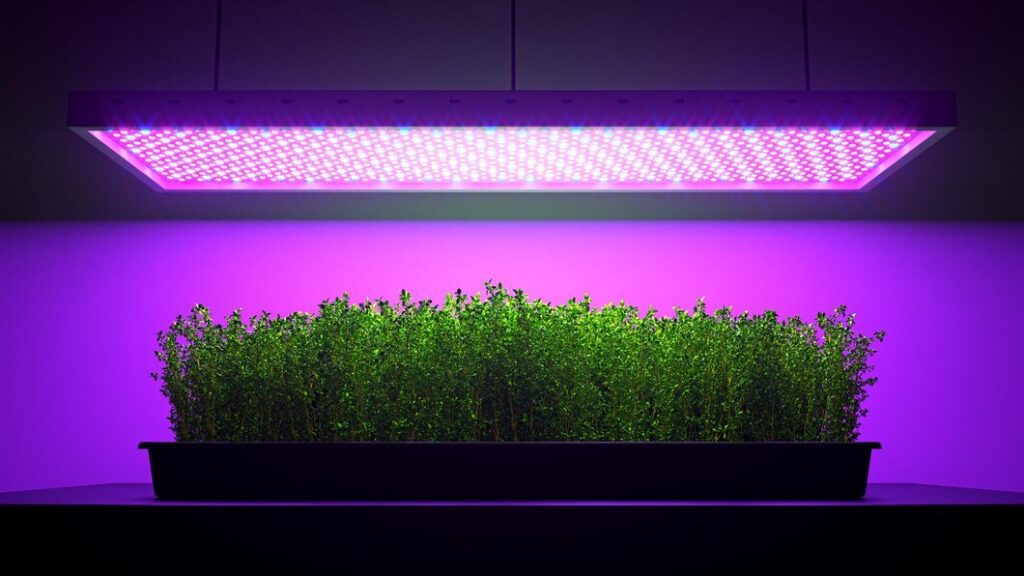
Choosing the Right LED Bulbs for Indoor Plant Growth
When it comes to choosing the right LED bulbs for indoor plant growth, there are several important factors to consider. First and foremost, it is crucial to select bulbs with the appropriate light spectrum. Different stages of plant growth require different wavelengths of light, and it is important to provide your plants with light that closely mimics natural sunlight. Most experts recommend using LED bulbs that emit light in the blue and red spectrum, as these wavelengths are essential for plant photosynthesis and growth.
Another important consideration when choosing LED bulbs for indoor plants is the wattage and intensity of the bulbs. The wattage will determine the amount of light produced, while the intensity refers to the brightness of the light. It is important to strike a balance between providing enough light for your plants to thrive without overwhelming them. Generally, a wattage of 20-30 watts per square foot is recommended for most indoor plants.
In addition to spectrum and intensity, it is also worth considering the lifespan and energy efficiency of the LED bulbs. LED bulbs are known for their long lifespan, often lasting up to 50,000 hours or more. This makes them a cost-effective choice in the long run, as they require less frequent replacement compared to other types of bulbs. Furthermore, LED bulbs are highly energy-efficient, consuming significantly less electricity than traditional incandescent or fluorescent bulbs.
| Factor | Description |
|---|---|
| Light Spectrums | Consider the optimal red and blue wavelengths for plant growth. Red light promotes flowering, while blue light encourages vegetative growth. Look for LED bulbs with a balanced spectrum. |
| Light Intensity (PPFD/PPF) | Pay attention to the light output measured in photosynthetic photon flux density (PPFD) or photosynthetic photon flux (PPF). Higher PPFD/PPF values provide more nourishment to plants. |
| Grow Light Efficiency (PPF/W) | Efficiency matters! Look for bulbs with a high PPF-to-watt ratio (PPF/W) to ensure energy efficiency. |
| Light Technology | Opt for LED bulbs that emit low heat, have a long lifespan, and are safe to use. |
| Color Rendering Index (CRI) | A higher CRI indicates better color accuracy. |
| Design and Material | Choose well-constructed bulbs made from durable materials. |
| Warranty and Certification | Look for bulbs with reliable warranties and appropriate certifications. |
Remember that the right LED grow light setup depends on your specific indoor garden needs. For vegetative growth, select lights in the 5,000 to 7,000 Kelvin range. For flowering, opt for lights in the 3,500 to 4,500 Kelvin range. Here are some popular LED grow lights to consider:
- Spider Farmer SF-2000 LED Grow Light: A top overall choice.
- MARS HYDRO LED Grow Light: Great for kits.
- Spider Farmer SF-4000 LED Grow Light: Ideal for large areas.
- Barrina Plant Grow Lights: Tubular lights for specific needs.
- VIPARSPECTRA P1000 LED Grow Light: Perfect for small spaces.
- Juhefa LED Grow Lights: Offers excellent value.
Remember to position your LED grow lights 12-30 inches above your plants for optimal results. Happy gardening!
Overall, selecting the right LED bulbs for indoor plant growth can greatly impact the success of your indoor garden. By considering factors such as spectrum, wattage, intensity, lifespan, and energy efficiency, you can ensure that your plants receive the optimal lighting conditions for healthy and vigorous growth.
• Spectrum: Choose LED bulbs that emit light in the blue and red spectrum to mimic natural sunlight.
• Wattage and intensity: Strike a balance between providing enough light for plants without overwhelming them. Aim for 20-30 watts per square foot.
• Lifespan: LED bulbs have a long lifespan, lasting up to 50,000 hours or more, reducing the need for frequent replacement.
• Energy efficiency: LED bulbs consume less electricity than traditional incandescent or fluorescent bulbs, making them cost-effective in the long run.
• Consider factors such as spectrum, wattage, intensity, lifespan, and energy efficiency when selecting LED bulbs for indoor plant growth.
DIY Light Reflectors for Indoor Plants
Have you ever wondered how to maximize the amount of light your indoor plants receive? One effective and affordable solution is to create your own DIY light reflectors. Light reflectors help redirect and intensify the natural light that reaches your plants, ensuring they receive the optimal amount of light needed for growth.
To make a DIY light reflector, all you need is a piece of reflective material, such as aluminum foil or reflective Mylar, and some basic crafting supplies. Start by cutting the reflective material to the desired size and shape, considering the size of your plants and the space they occupy. Then, attach the material to a sturdy backing, like cardboard or poster board, using adhesive or tape. Finally, position the reflector near your plants, angling it to bounce light onto the leaves and stems.
• Reflectors redirect and intensify natural light for indoor plants
• DIY reflectors are effective and affordable solutions
• Materials needed: reflective material (aluminum foil or reflective Mylar), crafting supplies
• Cut the reflective material to desired size and shape
• Attach the material to a sturdy backing using adhesive or tape
• Position reflector near plants, angling it to bounce light onto leaves and stems
Creating a DIY Light Stand for Indoor Plants
Creating a DIY light stand for indoor plants can be a practical and cost-effective solution for providing optimal light exposure to your green companions. By constructing a light stand yourself, you have the freedom to customize its size, height, and design according to your specific needs.
When building a DIY light stand, it is crucial to consider the light requirements of your plants. Determine the lighting intensity and duration needed for your specific plant species by referring to reputable sources or consulting with a plant expert. This information will guide you in choosing the appropriate lighting fixtures and bulbs for your DIY stand.
To ensure that your light stand provides uniform light distribution, consider using a reflective material to line the inside walls of the stand. This will help redirect and amplify the light towards the plants, maximizing their exposure. Reflective surfaces, such as aluminum foil or Mylar, can effectively enhance the utilization of natural or artificial light.
When constructing your DIY light stand, safety should be a top priority. Secure the lighting fixtures properly to prevent any potential hazards such as fire or electrical shock. Additionally, ensure that the stand is stable and can support the weight of the fixtures, plants, and any additional equipment you may have.
Creating a DIY light stand for indoor plants allows you to tailor the lighting conditions specifically to meet the needs of your green companions. With careful planning and consideration, you can provide your plants with the optimal light exposure they require to thrive and flourish.
• Constructing a DIY light stand allows for customization of size, height, and design
• Consider the light requirements of your plants before building the stand
• Determine lighting intensity and duration needed for specific plant species
• Use reflective material to line inside walls of the stand for uniform light distribution
• Reflective surfaces like aluminum foil or Mylar can enhance utilization of natural or artificial light
• Ensure proper installation and secure lighting fixtures to prevent hazards
• Make sure the stand is stable enough to support weight of fixtures, plants, and equipment
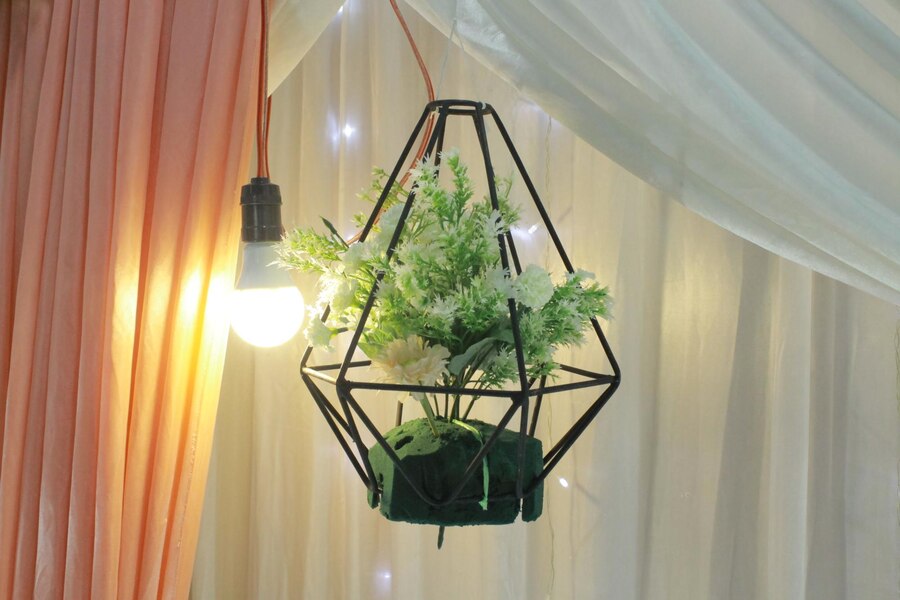
Harnessing Sunlight with Solar-Powered Lights
Solar-powered lights are a sustainable and environmentally friendly solution for harnessing sunlight to support the growth of indoor plants. By utilizing solar energy, these lights eliminate the need for electricity and reduce greenhouse gas emissions. They are an excellent option for gardeners looking to minimize their carbon footprint and promote sustainable gardening practices.
One of the significant advantages of solar-powered lights is their versatility. These lights come in various designs, including string lights, spotlights, and even grow lights specifically designed for indoor plants. This allows gardeners to choose the most suitable option for their space and plant requirements. Additionally, some solar-powered lights feature adjustable panels, allowing users to position the light source optimally for maximum sunlight exposure.
• Solar-powered lights are a sustainable and environmentally friendly solution for indoor gardening.
• They eliminate the need for electricity and reduce greenhouse gas emissions.
• Solar-powered lights are versatile, with various designs available such as string lights, spotlights, and grow lights.
• Gardeners can choose the most suitable option for their space and plant requirements.
• Some solar-powered lights have adjustable panels to optimize sunlight exposure.
Evaluating the Effectiveness of Solar-Powered Lights for Indoor Plants
Solar-powered lights are an increasingly popular option for indoor plant growth due to their environmentally friendly and cost-effective nature. These lights harness the power of sunlight to provide a sustainable source of energy for plants, eliminating the need for traditional electricity. However, when evaluating the effectiveness of solar-powered lights for indoor plants, several factors need to be considered.
One key aspect to assess is the intensity and duration of light provided by solar-powered lights. While sunlight is abundant and powerful outdoors, the same cannot always be said for indoor settings. Factors such as the location and orientation of windows, the presence of shading structures, and the weather conditions can all affect the amount and quality of sunlight received by indoor plants. Additionally, the effectiveness of solar-powered lights may vary depending on the specific light spectrum they emit, with some plants requiring specific wavelengths for optimal growth. Therefore, it is crucial to carefully consider the light requirements of the plants being cultivated and assess whether solar-powered lights can provide sufficient and suitable light intensity for their needs.
• The intensity and duration of light provided by solar-powered lights should be evaluated
• Factors such as location, orientation of windows, shading structures, and weather conditions can affect the amount and quality of sunlight received indoors
• Different plants may require specific wavelengths for optimal growth, so the light spectrum emitted by solar-powered lights should be considered
• Carefully consider the light requirements of the plants being cultivated to determine if solar-powered lights can meet their needs
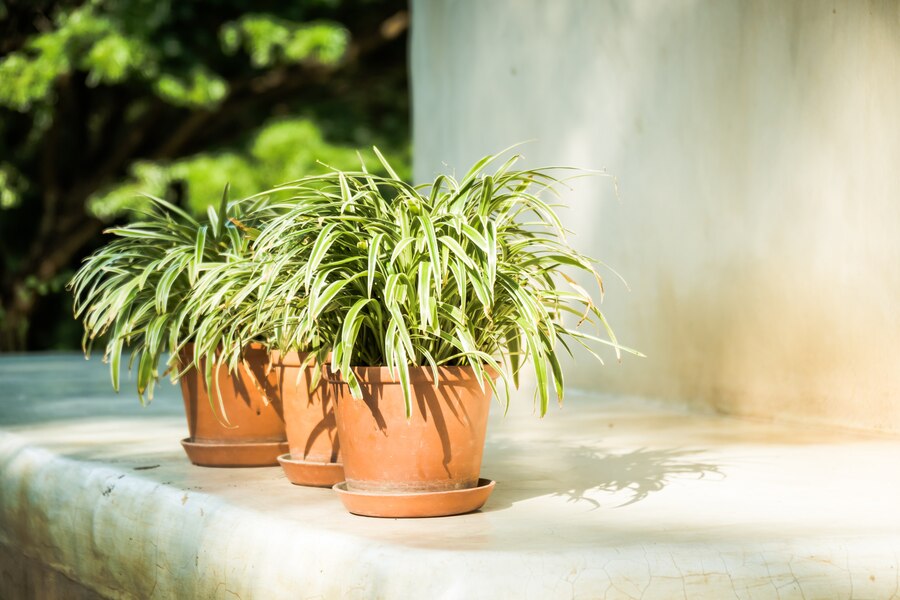
Using Fluorescent Lights as a Budget-Friendly Alternative
Fluorescent lights have long been recognized as a cost-effective alternative for indoor plant growth. These lights are known for their energy efficiency and affordability, making them a popular choice among budget-conscious gardeners. Unlike traditional incandescent bulbs, fluorescent lights produce minimal heat, reducing the risk of overheating and damage to plants. This characteristic allows gardeners to keep the lights in close proximity to their indoor plants without the fear of scorching the leaves or stunting growth. Additionally, fluorescent lights have a longer lifespan compared to other lighting options, meaning they require less frequent replacement and result in lower maintenance costs. For those looking to maximize their indoor gardening efforts without breaking the bank, investing in a set of fluorescent lights is a wise and practical choice.
However, it is important to note that there are certain limitations to using fluorescent lights for indoor plant growth. While these lights are suitable for a wide range of plants, they are not ideal for species that require high-intensity lighting. Fluorescent lights emit a specific spectrum of light that may not provide the necessary wavelengths for plants with high light requirements. Furthermore, fluorescent lights do not possess the same intensity as natural sunlight, which can affect the overall growth and development of some plants. Therefore, it is crucial for gardeners to assess the specific light needs of their plants before relying solely on fluorescent lights. By understanding these limitations and choosing appropriate plant species, gardeners can successfully utilize fluorescent lights as a budget-friendly lighting alternative for indoor plant growth.
• Fluorescent lights are known for their energy efficiency and affordability.
• They produce minimal heat, reducing the risk of overheating and damage to plants.
• Fluorescent lights have a longer lifespan compared to other lighting options, resulting in lower maintenance costs.
• Investing in a set of fluorescent lights is a wise and practical choice for budget-conscious gardeners.
• However, fluorescent lights may not be suitable for plants that require high-intensity lighting.
• The specific spectrum of light emitted by fluorescent lights may not provide the necessary wavelengths for some plants with high light requirements.
• Fluorescent lights do not possess the same intensity as natural sunlight, which can affect the overall growth and development of certain plant species.
Selecting the Appropriate Fluorescent Lights for Indoor Plants
When it comes to indoor plants, selecting the appropriate fluorescent lights is crucial for their growth and overall well-being. Fluorescent lights are a popular and budget-friendly alternative to natural or LED lights, offering a reliable source of artificial light for plants. However, not all fluorescent lights are created equal, and it’s important to choose the right ones to ensure optimal plant growth.
One key factor to consider when selecting fluorescent lights for indoor plants is the color temperature of the bulbs. Color temperature is measured in Kelvin (K) and determines the type of light emitted by the bulbs. For most indoor plants, a color temperature of around 6500K is recommended, as it mimics the natural light conditions that plants need for photosynthesis. This color temperature, known as “daylight” or “cool white,” provides a balanced spectrum of light that promotes healthy growth and development in plants.
Aside from color temperature, it’s also important to choose fluorescent lights with the appropriate intensity or brightness. The intensity of light is measured in lumens (lm) and refers to the amount of light emitted by the bulbs. Different plants have different light requirements, so it’s essential to match the intensity of the fluorescent lights to the specific needs of the plants you are growing. Consulting a plant light intensity chart or seeking advice from a horticulturist can help you determine the optimal brightness for your indoor plants. By selecting fluorescent lights with the right color temperature and intensity, you can ensure that your plants thrive in an indoor environment.
• Color temperature is a crucial factor in selecting fluorescent lights for indoor plants
• Recommended color temperature for most indoor plants is around 6500K
• This mimics natural light conditions necessary for photosynthesis
• “Daylight” or “cool white” bulbs provide a balanced spectrum of light for healthy plant growth and development
• Intensity or brightness of the fluorescent lights should also be considered
• Light intensity is measured in lumens (lm)
• Different plants have different light requirements, so it’s important to match the intensity to their specific needs
• Consulting a plant light intensity chart or seeking advice from a horticulturist can help determine optimal brightness
for your indoor plants.
Understanding the Limitations of Fluorescent Lights for Indoor Plant Growth
Fluorescent lights have long been used as a cost-effective option for indoor plant growth. However, it is important to understand their limitations in order to make informed decisions about their usage. One key limitation of fluorescent lights is their limited light spectrum. While they provide a sufficient amount of light for most plants, they lack certain wavelengths that are necessary for optimal growth. This can lead to subpar results, especially for plants that require specific types of light, such as flowering plants or those in the fruiting stage.
Additionally, fluorescent lights tend to have a lower intensity compared to other types of lighting, such as LED or natural light. This can result in slower growth rates and weaker plants. Furthermore, fluorescent lights emit a lower amount of heat compared to other options, which can be beneficial in terms of energy efficiency but may not provide enough warmth for plants that thrive in higher temperatures. Overall, while fluorescent lights can certainly support indoor plant growth, their limitations in terms of light spectrum, intensity, and heat output should be taken into consideration when developing a lighting strategy for your plants.
• One key limitation of fluorescent lights is their limited light spectrum
• They lack certain wavelengths necessary for optimal growth
• This can lead to subpar results, especially for flowering plants or those in the fruiting stage
• Fluorescent lights have a lower intensity compared to other types of lighting such as LED or natural light
• This can result in slower growth rates and weaker plants
• Fluorescent lights emit a lower amount of heat compared to other options
• This can be beneficial in terms of energy efficiency but may not provide enough warmth for plants that thrive in higher temperatures
Let’s discuss the limitations of using fluorescent lights for indoor plant growth. While fluorescent lights have their advantages, they also come with some drawbacks. Here’s a table summarizing these limitations:
| Limitation | Description |
|---|---|
| Short Lifespan | Fluorescent lights have a shorter lifespan compared to other types of grow lights, such as LEDs. Frequent replacements may be necessary. |
| Limited Light Intensity | Fluorescent lights provide less light intensity compared to other types of grow lights, such as HID lights. They may not be suitable for growing larger or more demanding plants. |
| Cool Light | Fluorescent lights produce cool light, which may not be as effective for growing plants as warm light. Warm light is often preferred during flowering and fruiting stages. |
| Reduced Heat Emission | While reduced heat emission is an advantage, it can also be a limitation. Fluorescent bulbs emit less heat, but this feature can reduce their lifespan and create an unstable light supply due to flickering. |
| Costly Installation | Setting up a fluorescent light system can be costly, especially if you need multiple fixtures for a larger indoor garden. |
| Not Ideal for Flowering Plants | Fluorescent lights are better suited for foliage plants due to their blue light spectrum. They may not provide sufficient red light for flowering or fruiting plants. |
Keep these limitations in mind when choosing your indoor plant lighting. While fluorescents can work well for certain situations, consider other options like LEDs if you have specific plant requirements. Happy gardening!
Overall, while fluorescent lights can support indoor plant growth, their limitations should be considered when developing a lighting strategy.
Experimenting with Incandescent Lights for Indoor Plants
Incandescent lights have long been a popular choice for indoor plant enthusiasts due to their availability and affordability. However, when it comes to experimenting with incandescent lights for indoor plants, there are some important considerations to keep in mind.
First and foremost, it’s essential to understand that incandescent lights emit a high level of heat compared to other lighting options. This can be detrimental to the health and growth of your plants if not properly managed. It’s crucial to maintain a safe distance between the plants and the incandescent lights to prevent them from overheating and suffering from thermal stress.
Additionally, incandescent lights have a limited spectrum of light, with a majority of their energy being emitted as red and infrared wavelengths. While this spectrum is suitable for flowering plants, it may not provide the ideal conditions for other plant growth stages, such as vegetative growth. It’s important to consider the specific needs of your plants and ensure they receive the appropriate light spectrum for optimal growth and development.
In conclusion, while incandescent lights can be an accessible and cost-effective option for indoor plant growth, it’s important to be aware of their limitations. Managing the heat emitted by these lights and providing the necessary light spectrum for your plants’ specific growth stages are crucial factors to consider when experimenting with incandescent lights. By doing so, you can maximize their potential benefits while avoiding potential setbacks in your indoor gardening journey.
– Incandescent lights emit a high level of heat compared to other lighting options
– It is crucial to maintain a safe distance between the plants and the incandescent lights to prevent overheating and thermal stress
– Incandescent lights have a limited spectrum of light, with most of their energy being emitted as red and infrared wavelengths
– This spectrum may not provide ideal conditions for all plant growth stages, such as vegetative growth
– Consider the specific needs of your plants and ensure they receive the appropriate light spectrum for optimal growth and development
Considering the Pros and Cons of Incandescent Lights for Indoor Plant Growth
Incandescent lights have long been a popular choice for indoor plant growth, mainly due to their affordability and widespread availability. However, when considering the pros and cons of using incandescent lights for indoor plants, it is essential to understand their limitations.
One advantage of incandescent lights is that they emit a warm, natural light that closely resembles sunlight. This can be beneficial for certain types of plants that require more red and yellow light spectrums for optimal growth and flowering. Additionally, incandescent lights are relatively inexpensive compared to other lighting options, making them an attractive choice for budget-conscious gardeners.
However, there are significant drawbacks to using incandescent lights for indoor plants, particularly in terms of energy efficiency. Incandescent bulbs produce a significant amount of heat, which can lead to higher electricity bills and potential damage to sensitive plants. Moreover, they have a shorter lifespan compared to other lighting options, which means frequent replacement and additional expenses in the long run. Additionally, incandescent lights have a low efficacy rating, meaning they convert less electricity into usable light, wasting energy and contributing to environmental concerns.
In conclusion, while incandescent lights may be an affordable option for indoor plant growth, their limitations, such as poor energy efficiency and short lifespan, make them less ideal compared to other lighting alternatives. Gardeners should consider the specific needs of their plants and explore more efficient lighting options, such as LED or fluorescent lights, to ensure optimal growth and minimize energy consumption. By making informed choices, gardeners can create thriving indoor gardens that not only benefit their plants but also the environment.
• Incandescent lights emit a warm, natural light that closely resembles sunlight.
• This type of lighting is beneficial for plants that require more red and yellow light spectrums for growth and flowering.
• Incandescent lights are relatively inexpensive compared to other lighting options, making them budget-friendly.
• However, incandescent lights have significant drawbacks in terms of energy efficiency.
• They produce a significant amount of heat, leading to higher electricity bills and potential damage to sensitive plants.
• Incandescent bulbs have a shorter lifespan compared to other lighting options, resulting in frequent replacements and additional expenses over time.
• These lights have a low efficacy rating, meaning they convert less electricity into usable light, wasting energy and contributing to environmental concerns.
• In conclusion, while incandescent lights may be affordable initially, their limitations make them less ideal compared to alternatives such as LED or fluorescent lights.
• Gardeners should consider the specific needs of their plants and explore more efficient lighting options for optimal growth and minimal energy consumption.
Please do watch video and know more information!
Can incandescent lights be used as a sole source of light for indoor plant growth?
No, incandescent lights are not typically recommended as a sole source of light for indoor plant growth. They produce a lot of heat and emit a limited spectrum of light, which may not provide the necessary wavelengths for optimal plant growth.
Are there any advantages to using incandescent lights for indoor plants?
While incandescent lights are not ideal for indoor plant growth, they do have some advantages. They are inexpensive and widely available, making them a budget-friendly option for providing supplemental lighting to certain types of plants.
Do incandescent lights emit the full spectrum of light that plants need?
No, incandescent lights emit a limited spectrum of light, with a majority of the energy being released as heat. This means that they do not provide the full spectrum of light that plants require for photosynthesis.
Can incandescent lights be used in combination with other light sources for indoor plant growth?
Yes, incandescent lights can be used in combination with other light sources, such as fluorescent or LED lights, to provide a broader spectrum of light for indoor plants. This can help compensate for the limitations of incandescent lights.
Are there any specific types of plants that can benefit from incandescent lights?
Certain plants with low light requirements, such as pothos or snake plants, may tolerate or benefit from the use of incandescent lights. However, it is important to monitor the heat output and ensure that the plants do not become too hot or dry out.
How far should incandescent lights be placed from indoor plants?
Incandescent lights should be placed at a safe distance from indoor plants to prevent them from getting too hot. It is recommended to keep the lights at least 12 inches away from the plants and monitor the temperature regularly.
Can incandescent lights be used for all stages of plant growth?
Incandescent lights are not ideal for all stages of plant growth. They emit a high amount of red light, which is more suitable for flowering and fruiting stages. For vegetative growth, a broader spectrum of light, such as that provided by fluorescent or LED lights, is generally recommended.
Are there any safety considerations when using incandescent lights for indoor plants?
Yes, there are safety considerations when using incandescent lights for indoor plants. They produce a significant amount of heat, which can pose a risk of fire or burning the plants. It is important to properly position and monitor the lights to prevent any potential hazards.

Nicole Burke is a dynamic writer at SouthElMonteHydroponics, fueled by her passion for horticulture and environmental sustainability. Armed with a degree in Environmental Science from a renowned institution, Nicole’s expertise lies in hydroponic gardening, organic farming, and biodiversity conservation. Her insatiable curiosity and love for nature drive her to explore innovative techniques in hydroponics, seeking to revolutionize the way we grow crops in urban environments. Nicole’s writing reflects her deep commitment to promoting eco-conscious practices and fostering a deeper connection between humans and the natural world. Through her engaging storytelling, she inspires others to embrace sustainable living and harness the power of hydroponics for a greener future.

